Preliminary Conference Program
Developments in connectivity, mapping and positioning
The emerging importance of connected mobility for safety on roads
 Thomas Jäger
Thomas JägerSenior vice president
DEKRA
Germany
The presentation will cover the latest updates on road safety issues (DEKRA yearly road safety reports, global issues, vehicle type impacts); the latest V2x connectivity technology developments, deployments and related safety improvements; the latest regulatory and certification situation (EU, US and others); the latest updates on testing requirements for connected and automated driving; the most recent developments in regional and global interest groups; and the challenges and outlook.
What the audience will learn
- Road safety challenges and how state-of-the-art technologies can help
- Regulatory and market requirements to be covered by manufacturers
- Global challenges on the way to autonomous driving
5G automotive connectivity: what to expect and when
Dr Maxime Flament
CTO
5GAA
Belgium
CTO
5GAA
Belgium
5GAA brings together global automotive, technology and telecommunications companies to develop end-to-end connected vehicle solutions for smarter, safer and more sustainable traffic. The presentation will give an overview of the 5GAA roadmap ramping up toward increasingly advanced use cases in the 2030 timeframe. The full integration of V2X technology into ADAS and automated driving systems (ADS) is one of the most prominent targets with many challenges at technological, standards, policy and business levels, but even more around the required mutual trust in such distributed systems. The presentation will expand on these industry challenges and the possible solutions before there can be any true introduction of these advanced use cases on the market at a global level.
What the audience will learn
- Many safety and traffic V2X use cases are emerging, from simple hazard warnings to teleoperation gradually increasing levels of complexity and automation
- The 5GAA roadmap envisions a rapid integration of V2X into ADAS and ADS
- Automotive connectivity exploits different radio access: vehicle-to-network, vehicle-to-vehicle, vehicle-to-roadside and vehicle-to-satellite
- Recent progress has been demonstrated in accurate positioning, low-latency services using MEC, 5G-compliant satcom, pedestrian and cyclist protection, etc
- Auto manufacturers are focussing on 5G 3GPP standards
ESA's LEO-PNT mission: revolutionizing GNSS
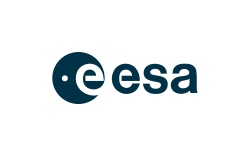 Florin Grec
Florin GrecLEO-PNT mission and experimentation engineer
European Space Agency
Netherlands
In this presentation, we explore the European Space Agency's innovative Low-Earth Orbit PNT initiative, a project poised to significantly enhance GNSS systems. Particularly relevant to the automotive community, this development promises improved accuracy and reliability over traditional GNSS. By harnessing the closer proximity of low Earth orbit (LEO), the ESA's program aims to offer rapid, precise PNT data, crucial for the future of autonomous and connected vehicles. This presentation delves into the technical advancements, potential applications and the transformative impact of LEO-PNT on automotive navigation technologies.
What the audience will learn
- What LEO-PNT is and how it is different from GNSS
- Expected benefits of LEO-PNT for automotive: fast and accurate resilient positioning
- How to engage with us to test the technology
- Synergies with 5G NTN from automotive point of view
10:15 - 10:45
Break
Opportunities and challenges of integrating V2X in ADAS
 Jens Buttgereit
Jens ButtgereitProduct owner
Vector Informatik GmbH
Germany
The integration of V2X communication into modern ADAS offers significant advantages and eliminates the limitations of traditional sensors. This enables improved perception of the environment and significantly increases safety. However, the challenges in integrating V2X communication into modern ADAS are manifold: the interoperability requires industry-wide accepted standards, sensor fusion algorithms additionally need to integrate and interpret another sensor, and an effective test and validation system is crucial to ensure the reliability and performance of these systems at all stages of development. This presentation provides an overview of the opportunities and challenges of V2X integration in ADAS.
What the audience will learn
- How V2X communication improves current and future ADAS
- V2X as a new sensor: challenges in fusing with additional sensor systems
- Challenges in testing and validation: from SIL to VIL
- Explanations of these challenges based on various use cases
The pathway to fully connected services
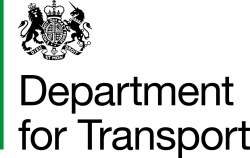 Suku Phull
Suku PhullTechnical specialist
The Department for Transport
UK
Intelligent transport systems (ITS) have evolved over the last 20 years from simple traffic signals, traffic detectors and signs operated by human operators into interconnected systems connecting and interfacing more directly to individual users with increasing levels of automated control through the emergence of connected and automated vehicle technologies. These more recent developments are intended to enable data sharing between systems to deliver a wide range of transportation-related socioeconomic benefits; within Europe these are generally termed ‘cooperative ITS’ (C-ITS) services and embrace infrastructure-to-vehicle (I2V), vehicle-to-infrastructure (V2I) and vehicle-to-vehicle (V2V) communication. This paper will provide an overview of global activities.
What the audience will learn
- Global developments on cooperative, connected and automated mobility
- Key supporting pillars enabling current developments
- Roles and responsibilities of key stakeholders in the process
- The role of big data as an enabler
- uUse cases under development and pilots
Advancing autonomous driving through ADAS and V2X communication
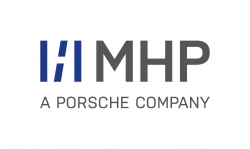 Khaled Alomari
Khaled AlomariManager for connected vehicles
MHP, a Porsche company
Germany
This presentation explores the intersection of advanced driver assistance systems (ADAS) and vehicle-to-everything (V2X) communication, illuminating the transformative impact of connectivity in autonomous driving. The benefits of this symbiotic relationship are explored, emphasizing improved safety, enhanced traffic efficiency and rapid response to dynamic road conditions. Key ADAS functions are scrutinized in the context of real-time data exchange, situational awareness and predictive analytics enabled by V2X connectivity. Real-world case studies underscore successful applications of V2X in ADAS, showcasing tangible positive impacts on safety and operational efficiency. The presentation concludes with a forward-looking perspective, envisioning the future potential of ADAS with V2X.
What the audience will learn
- Collective enhancement: the integration of V2X communication elevates ADAS functions by enabling real-time data exchange, fostering heightened situational awareness
- Operational advantages: V2X empowers ADAS with operational benefits, including improved safety measures, enhanced traffic flow and reduced congestion
- Challenges and considerations: challenges in V2X implementation, including cybersecurity risks and infrastructure preparedness
12:00 - 13:20
Lunch
Advanced simulation and HIL testing
Reduction of the residual risk in a SOTIF-compliant validation process
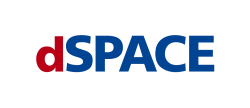 Thorsten Püschl
Thorsten PüschlProduct manager
dSpace GmbH
Germany
A major challenge for bringing autonomous vehicles to public service is homologation. It requires a SOTIF-compliant verification and validation process of the AV stack. Validation is a particular challenge as a reliable argumentation is required proving that the residual unknown risk is sufficiently low when the vehicle operates within its operation design domain. dSpace presents a new approach combining the analysis of real test drives with SIL simulation. Unknown risks in driving scenarios are found, evaluated and reduced. Abstract scenarios are used to categorize relevant scenarios experienced in test drives for an approximation of plausible test coverage evidence.
What the audience will learn
- SOTIF-compliant validation of AVs
- Reduction and estimation of residual risk
- Abstract scenarios
- Scenario-based testing
Unlocking the future: harnessing the power of digital twins
System simulation expert/simulation and HIL team leader
Valeo Detection Systems
Germany
In this presentation, we delve into the transformative potential of digital twins driven by advanced simulation technologies. Digital twins – virtual replicas of physical objects or systems – have become game-changers in various industries. We explore how simulation allows us to create highly accurate and dynamic digital twins, offering real-time insights into product performance, predictive maintenance and design optimization. By bridging the gap between the physical and digital worlds, digital twins enable informed decision making, reduced costs and enhanced efficiency.
What the audience will learn
- Gain a clear understanding of what digital twins are and how they bridge the physical and digital worlds
- Learn how advanced simulation technologies are leveraged to create and update dynamic digital twins in real time
- Understand how digital twins provide data-driven insights, enabling informed decision making, cost reduction and operational efficiency
- Explore the potential future trends and innovations driven by digital twins, offering new opportunities for research, development and business growth
Real-time testing of automated driving functions using parallelization
 Martin Herrmann
Martin HerrmannApplication expert ADAS & AV
IPG Automotive GmbH
Germany
Autonomous driving functions can no longer be validated solely in the real world, as critical edge cases are rare and dangerous. HIL simulation technologies bridge the gap between simulation and in-vehicle testing. However, the complexity of autonomous vehicles, number of sensors and ever-increasing data rates pose new challenges for HIL simulation. A possible approach is prototypically demonstrated with the implementation of two parallelization concepts based on specific use cases: CPU-based calculations on multiple real-time systems and parallelized sensor simulation on multiple GPUs, allowing arbitrary scalability of the number of sensors as well as the integration of additional models and systems.
What the audience will learn
- How sensor models with different levels of fidelity contribute to testing automated driving functions in simulation
- To which degree simulation of raw sensor data can be achieved for HIL testing with the perception layer
- How the computational load of sensor models can be distributed, observed and optimized on multiple GPUs
- How the computational load of other simulation modules can be distributed to multiple, time-synchronized real-time systems
- How the computed raw sensor data (camera, radar, lidar) can be injected into the device under test
Enhancing autonomous vehicle development through simulation with aiSim
 Dániel Tósoki
Dániel TósokiProduct director, aiSim,
aiMotive
Hungary
Explore the critical role of perception simulation in developing safe and reliable autonomous vehicles. This keynote offers an in-depth look at aiMotive's aiSim and its capabilities in simulating real-world sensor data to train and validate perception systems. Learn how aiSim empowers engineers to create highly realistic and challenging scenarios for perception algorithms, ensuring they are prepared for complex road environments. Discover the impact of perception simulation on accelerating the development of AI-driven perception in self-driving technology.
What the audience will learn
- An in-depth understanding of perception simulation in autonomous vehicle development
- Practical applications and real-world case studies using aiSim
- How to create and validate perception algorithms in complex, simulated scenarios
- The benefits of accelerated AI-driven perception development through simulation
- The future of perception simulation and its role in advancing self-driving technology
Best practices for the development, acceleration and safe deployment of ADAS & AV technologies
Navigating challenges in autonomous driving data acquisition
 Adrian Bertl
Adrian BertlStrategic product manager
b-plus technologies GmbH
Germany
This presentation delves into pivotal challenges faced by sensor and vehicle manufacturers in autonomous driving data acquisition. Focusing on data protection and confidentiality, it spans issues related to navigating sensitive data and enabling collaboration with external entities right from the beginning. Addressing data quality concerns, essential inputs for AI model training including tool requirements for compression, sensor synchronization and quality control of annotated data are covered. Emphasizing the importance of a diverse set of scenarios, tool requirements for selective data recording are outlined. Lastly, the presentation delves into the process aspects, covering the infrastructure for managing large scale data acquisition.
What the audience will learn
- The main requirements for usable data
- An architecture for efficient data acquisition
- Future data protection requirements
The significance of iterative understanding of ML data sets
 Tommy Johansson
Tommy JohanssonPerception expert
Kognic
Sweden
Machine learning (ML) models are only as good as the data sets they are trained on. The quality of the data set plays a pivotal role in determining the performance and reliability of the resulting models. However, achieving high-quality data sets is not a one-time task; it requires an iterative process of understanding, assessing and refining data to enhance model performance continually. This presentation delves into the critical role of iteratively assessing data set quality concerning model performance in the realm of machine learning, focusing on ADAS/AD use cases.
What the audience will learn
- Iterative data set quality: the necessity of ongoing assessment for improving model performance in machine learning
- The data set-model relationship: how data set attributes directly impact model outputs, revealing biases and flaws
- Continuous improvement: feedback loops must be established between data set assessment and model performance for ongoing enhancements
- Real-life applications: practical examples showcasing iterative data set analysis' impact on actionable decisions
- Informed decision making: using data set insights for adjusting model architecture and data collection strategies
Accelerating the safe deployment of autonomous trucks
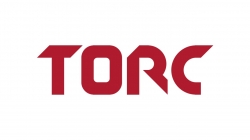 Dr Maximilian Köper
Dr Maximilian KöperSenior engineering manager
Torc Robotics
Germany
 Dr Holger Banzhaf
Dr Holger BanzhafManaging Director
DeepScenario GmbH
Germany
Deploying safe autonomous trucks requires a deep understanding of real-world driving. A key part of this process is the collection and analysis of traffic data to derive requirements, test cases and statistical distributions for safety validation. In this joint presentation, we give insights into DeepScenario’s collaboration with Torc Robotics to accelerate the safe deployment of autonomous trucks. At the core of the solution are stationary cameras combined with DeepScenario’s AI software, providing Torc with unparalleled data collection capabilities at critical locations. This allows Torc to significantly increase the efficiency of scenario mining and advance the safety of its autonomous trucks.
10:15 - 10:45
Break
Validation of interior cameras in synthetic environments
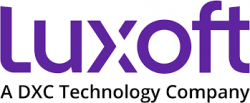 Wolfgang Stolzmann
Wolfgang StolzmannDirector
Luxoft
Germany
Advanced driver distraction warning (ADDW) is mandatory from 2024. Besides this and other safety functions, interior cameras can be used for extended user experience and improved passive safety and well-being. For occupant monitoring systems (OMS), this means that a vast range of new features will be introduced in the upcoming years. Therefore, Luxoft has further developed its OMS virtual validation toolchain. This presentation will cover corner cases for OMS validation as well as typical test scenarios for KPI analysis. It will present a database of virtual videos together with perfect ground truth (GT) data and apply it to a prototype device under test.
What the audience will learn
- The flexibility of Luxoft’s OMS virtual validation toolchain
- Interactive experience of the toolchain
- Application of the toolchain for KPI analysis
Moving from ADAS to HDAS – humanized driver assistance systems
 Raunaq Bose
Raunaq BoseCTO
Humanising Autonomy
UK
ADAS and AV technologies have so far had limited success in areas with high numbers of vulnerable road users (VRUs) such as pedestrians and cyclists. The current approach is much too focused on the 'physics' of the situation (relative distances, velocities and accelerations of VRUs), which does not reflect the reality of interactions and negotiations between vehicles and VRUs. Developing ADAS and AV technologies focused on the behavior of VRUs, on top of their physics, is key for the widespread adoption of ADAS. This presentation will outline the performance and user benefits of a humanized driver assistance system (HDAS).
What the audience will learn
- ADAS and AV technologies are too focused on the physics of situations
- At best, this leads to annoyance and a loss of trust with ADAS/AV technologies, meaning people ignore them
- At worst, it leads to accidents and fatalaties as systems are switched off or complex situations misinterpreted
- Developing ADAS and AV technologies focused on the behavior of VRUs, not just their motion, is key
- Some approaches that can make ADAS/AV more humanized and lead to better performance and compliance
Bridging Scale and Differentiation in Autonomous Driving
 Nimrod Brickman
Nimrod BrickmanVP business development
Mobileye
Israel
The aspirations of automakers to create hands-off systems tailored to their brand identity face challenges from the practical business imperatives of timely market entry and cost-effectiveness. Striking a delicate balance between achieving scale and delivering customization requires a nuanced interplay involving perception, driving policy, and control, alongside a dynamic collaboration between supplier and carmaker.
This presentation by Mobileye VP of Business Development Nimrod Brickman will discuss the complexities of designing for differentiation in hands-off driving and remaining challenges on the path from development to commercialization. Nimrod will discuss the paradigm shift that Mobileye DXP is fueling by enabling automakers to retain control of the driver experience through a new programming language that strategically splits the stack into universal and unique components.
Optimizing safe stop trajectories: synthesizing algorithms for autonomous vehicles
 Kai Wah Chan
Kai Wah ChanSoftware developer
TOPAS Industriemathematik Innovation gGmbH
Germany
In the realm of autonomous driving, ensuring a secure and seamless halt is imperative across diverse scenarios, ranging from routine stops at traffic lights to critical situations involving navigation failures or communication errors. This presentation unveils a novel methodology for swiftly calculating safe stop trajectories. The approach harmonizes machine learning tools with classical algorithms rooted in optimization and optimal control theory. Notably, it harnesses the underutilized feasibility correction method, leveraging parametric sensitivity analysis to significantly expedite computation. This research contributes a nuanced perspective to the pursuit of enhancing safety and efficiency in autonomous vehicle systems.
What the audience will learn
- Efficient computation of safe stop trajectories for autonomous vehicles based on optimal control theory
- Combining classical optimization algorithms and machine learning techniques for the clustering of static traffic situations
- Applying the feasibility correction method for accelerated computations based on parametric sensitivity analysis
12:25 - 13:55
Lunch
Development, test, deployment and evaluation of sensors.
Transforming vehicle manufacturing: redefining sensor selection processes through cloud technology
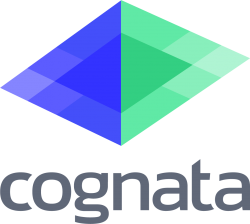 Danny Atsmon
Danny AtsmonCEO & founder
Cognata
Israel
The Automated Driving Perception Hub (ADPH) is a joint venture between Cognata, Microsoft and AMD, providing an end-to-end solution for selecting sensor packages with confidence and efficiency. It combines Cognata’s ADAS simulation software, Microsoft’s Azure cloud, AMD GPUs and sensor models supported by suppliers. The presentation will address the complexities of selecting a sensor suite for ADAS and autonomous vehicles, offering a solution to help impede innovation and reduce costs. The platform enables engineers to run virtual tests and analyze sensor package alternatives, producing a cost/performance analysis in a matter of days instead of weeks.
What the audience will learn
- Transformative strategies and technologies that reshape sensor selection in vehicle manufacturing for enhanced decision making and workflow optimization
- The role of digital twin-based simulations in facilitating precise, efficient and photorealistic sensor testing and evaluation processes
- How to harness robust supercomputing and AI advancements, boosting data management, machine learning and operational functionalities in sensor selection
- Evolving trends, breakthroughs and the future landscape of automotive sensor selection and integration
Quantifying AV sensor performance during adverse weather conditions
 Andre Burgess
Andre BurgessAssured Autonomy Progamme lead
National Physical Laboratory
UK
NPL and the Met Office have been undertaking a project funded by the UK Department for Transport to develop the methodological framework required to reliably evaluate how well automotive sensors used within self-driving vehicles perform in different weather-related conditions. When developed, this framework will be used to allow for the testing of AV sensors as part of the assurance process as well as aiding in the safety assurance process to determine the limits in which these vehicles may operate (operational design domains). This presentation considers what is required to demonstrate the performance of CAV sensors to support system developers, regulatory approval and authorization processes.
What the audience will learn
- Weather affects sensor performance in complex ways: how might we simplify this complexity?
- How can we establish an assurance infrastructure in which AV sensors can be reliably and cost-effectively tested?
- How can we determine what the operational design domains are in which a given suite of AV sensors can perform?
Advanced in-cabin safety and comfort with new hybrid image sensors
Technical marketing manager automotive imaging
STMicroelectronics
Germany
While driver monitoring systems promise greater road safety by assessing driver alertness and ability to drive, the next step on the way to autonomous cars is sensors that monitor the full vehicle interior, covering both the driver and all passengers. At the same time, new applications will be enabled, like safety belt checks, vital sign monitoring, child detection and high-quality video/picture recording. The presentation will show how this innovative sensor can enable a 'one camera' system which integrates both infrared and HDR color images and solves development pain points, thus generating a cost-efficient solution and at the same time bringing added value to customers.
What the audience will learn
- Image sensor technology
- Mixel color filter sensors
- Machine and human vision application in one sensor
15:15 - 15:45
Break
Flexible HIL helps technology providers accelerate CI/CD capabilities
 Gordan Galic
Gordan GalicTechnical marketing director
Xylon
Croatia
Nowadays automated vehicles have 10+ cameras, multiple radar, lidar and other sensors. A diverse approach to simulation is a strategic need for ADAS platform providers. Technology providers adopting HIL-based resimulation together with cloud-native SW capabilities have a more complete approach. HIL platforms must leverage big data and enable fast feedback to developers. The presentation will explain how to stay ahead of new HW requirements with the futureproof HIL platform that grows with users’ needs. Typical HIL validation challenges and their solutions will be presented based on Qualcomm’s use of Xylon’s HIL system in the development and validation of Snapdragon Ride Vision.
What the audience will learn
- The challenges faced by technology providers who want to accelerate CI/CD capabilities
- Adopting HIL resimulation within the organization, with an emphasis on big data handling and cloud-native SW capabilities
- How challenging integration of third-party tools saves company investments and enables reuse of existing data assets
- Description of a flexible HIL platform that solves current challenges and expands to fulfill future requirements
- Full demo case description explaining how Qualcomm uses Xylon HIL to validate the Snapdragon Ride Vision platform
Lab-based homologation of SAE Level 3 vehicles using multisensor simulation
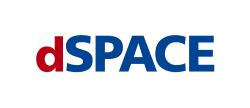 Gregor Sievers
Gregor SieversProduct manager
dSpace GmbH
Germany
Efficient homologation of SAE Level 3 vehicles requires testing and validation of software and hardware systems in the lab. This results in new challenges and requirements compared to traditional testing such as the simulation of validated sensor raw data with the highest timing accuracy. This presentation offers a comprehensive end-to-end test architecture for the verification of Level 3 functions in a controlled lab environment. This includes the simulation of dozens of sensors simultaneously in real time and highly synchronized. The presentation covers sensor simulation for camera, radar, lidar and ultrasonic sensors, as well as all automotive bus interfaces and V2X and GNSS/GPS.
What the audience will learn
- How lab-based testing can be used for the homologation of SAE Level 3 vehicles
- Different types of sensor simulation for data injection on raw-data level
- How sensor models need to be validated
- Requirements for the overall test system architecture regarding real-time performance, synchronization and flexibility
- Functional safety requirements of SAE Level 3 vehicles and how ISO 26262-certified test software can help here
New tendencies in lidar technology for autonomous vehicles
 Valeriy Savelyev
Valeriy SavelyevChief science officer
Integrated Quantum Photonics
USA
The current state of development of autonomous vehicle technology requires a critical analysis of the requirements and key elements of autonomous driving systems, in particular, visualization systems. The report focuses on emerging trends in lidar technology to improve performance in autonomous vehicles. The new trends are flash principles of lidar with fast response; optical systems for laser beam distribution, in particular diffraction optics; a new method of obtaining information in the format of a visual camera with distance information (possibly in color), which makes it possible to analyze information based on AI without the stage of spatial reconstruction; and others. This also provides advanced engineering solutions, such as the absence of mechanical parts, miniaturization, power consumption and others.
What the audience will learn
- The current state of autonomous vehicle technologies from the point of view of visualization systems
- Novel tendencies in lidar visualization systems – principles and instrumentations
- The lidar flash principle – pulsed illumination of the entire situation, reading the information in camera format and determining range
- Key elements of advanced lidar sensors – laser light source on base diffraction optics, photosensors on base silicon photomultiplier
- New information format and processing algorithms

